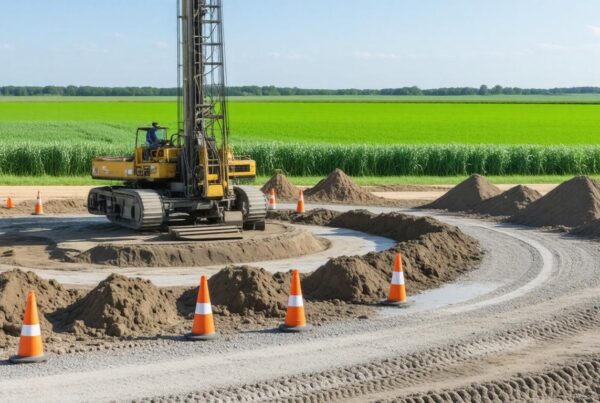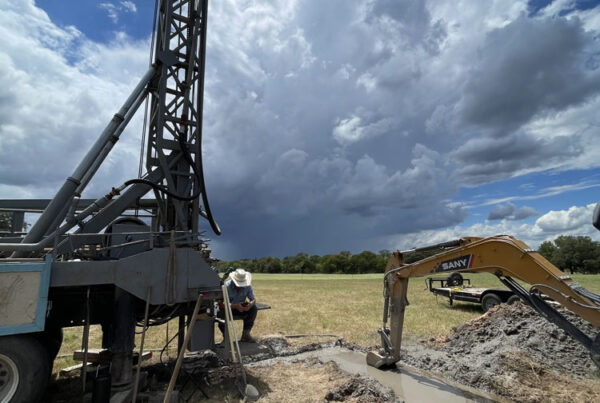Water is something many of us take for granted until our taps run dry or our well stops working. Installing your own water well might seem like a big job, but with the right knowledge, it’s a smart way to ensure a steady supply of clean water on your property. Whether you’re a homeowner, farmer, or business owner in Texas Hill Country, understanding how water wells work and what goes into putting one in will help you make better decisions and avoid costly mistakes. In this guide, we’ll break down everything from planning to maintenance in simple terms, so you feel confident every step of the way.
Water well installation involves drilling into underground aquifers to access clean, reliable water for residential, commercial, or agricultural use. At Stevens Drilling, we provide expert water well drilling and installation services throughout the Texas Hill Country, ensuring precision, compliance with state regulations, and long-term well performance tailored to your water needs.
Planning Your Water Well Installation
Right from the start, understanding your land’s unique characteristics and your specific water needs makes all the difference. Before drilling begins, a detailed site evaluation is crucial. This means examining factors like soil composition, topography, and nearby sources of contamination.
For example, sandy soils typically make drilling easier but might allow contaminants to seep in more quickly, whereas clay-heavy soils can slow down the process but provide better natural filtration. These nuances affect both the complexity and safety of your well.
While some homeowners believe placing a well on higher ground keeps it safer from surface runoff, experts often point out that lower elevations tend to have more stable water tables—meaning consistent supply over time. Balancing these factors requires careful thought, especially when considering local conditions in Texas Hill Country, where terrain varies widely, influencing groundwater depth.
Beyond choosing the right spot, consider these essential elements:
- Water Demand Assessment: Think about how much water you’ll need daily. Is it for a small household or a large irrigation system? This impacts the size and depth of the well.
- Site Evaluation: Beyond just soil tests, looking at past land use and any potential contamination sources nearby helps prevent future issues.
- Professional Consultation: Bringing in a geologist or experienced driller can reveal underground rock layers or aquifers invisible to the naked eye but critical to successful drilling.
- Budget Planning: Well installation costs vary widely—anything from equipment rentals to permit fees—and unexpected challenges can add expenses.
- Timeline Development: Weather delays or permitting issues are common; having buffer time prevents unnecessary frustration.
Each step intertwines with the next like threads in a rope—the strength of your well depends on cohesive planning. For instance, failing to assess water demand accurately could mean installing a smaller pump that struggles during dry spells. Similarly, ignoring soil composition might lead to costly repairs if the well casing wears out prematurely due to abrasive sediments.
In Texas’ Hill Country—where Stevens Drilling has proudly served since 1968—this thorough upfront approach ensures clients enjoy dependable water access regardless of location. Engaging with professionals early on can save thousands by avoiding redrills or inefficient setups.
Once your site is selected and plans are clear, understanding regulatory guidelines becomes essential to ensure your project proceeds smoothly and legally compliant.
Legal and Permitting Requirements
Navigating the legal landscape around water well installation is often more complex than people expect, but it’s essential for protecting both your property rights and local groundwater resources. Almost every state requires a permit before drilling can begin, with regulations designed to ensure wells are constructed safely and sustainably.
In Texas, for example, this means working through the Texas Commission on Environmental Quality (TCEQ), which oversees well permitting based on county-specific rules and environmental considerations. It’s not just paperwork; this process safeguards your investment by verifying that the planned well won’t interfere with neighboring wells or contaminate aquifers.
The permit application process often begins with gathering substantial documentation—property deeds to prove ownership, site plans showing where the well will be located, and sometimes soil or geological test results that detail subsurface conditions.
These documents help regulatory agencies assess potential risks, such as proximity to septic systems or flood zones, which could affect well safety and water quality. Then comes completing detailed application forms where you specify the well’s intended use—whether residential, agricultural irrigation, or commercial—and expected depth and casing specifications.
One of the most important, yet sometimes overlooked aspects is patience during the approval phase. Many applicants underestimate how long it takes to receive official permission—waiting weeks or even months is common.
This delay reflects careful review procedures rather than bureaucratic inefficiency. During this time, agencies may request additional information or site inspections to confirm compliance with health and environmental standards.
Having an experienced local contractor who understands these stages can make a big difference in ensuring applications move smoothly and swiftly.
Failure to comply with local permitting laws can result in fines, forced cessation of drilling activities, or even having to dismantle improperly installed wells later on.
Worse still, unpermitted wells might pose serious hazards to your family’s health if groundwater becomes contaminated due to incorrect construction standards.
Thus, the permitting process is not just bureaucratic red tape—it embodies protective measures built from decades of experience managing groundwater resources responsibly across Texas Hill Country.
Many landowners find it helpful to consult directly with county water authorities early on; these offices provide guidance specific to their region’s geology and water policies. Counties like Bexar, Comal, and Guadalupe each have nuances in their permitting requirements that influence everything from setback distances to casing depths.
Since Stevens Drilling has proudly served communities across these counties since 1968, we’ve assisted many clients with navigating these intricacies efficiently.
Legal compliance through proper permitting protects more than just your property—it preserves one of Texas’ most valuable natural resources: clean groundwater.
Once permits are secured and regulations understood, you can confidently move forward into choosing the right drilling methods tailored specifically for your site’s underground conditions.
Types of Drilling Methods
When it comes to drilling a water well, the method chosen affects not only how quickly the job gets done but also the quality and durability of the well itself. Among the options, three main drilling techniques stand out for their unique approaches: cable tool drilling, rotary drilling, and air rotary drilling.
Cable Tool Drilling
Cable tool drilling is something of a throwback—this classic approach involves lowering a heavy chisel-shaped tool on a cable, then repeatedly lifting and dropping it to essentially pound through rock and soil. It’s a simple but slow process that relies on patience and brute force rather than cutting action.
While cable tool drilling has fallen out of favor in urban or large-scale projects due to its slower pace and labor intensity, some rural or highly specialized sites still rely on it because it can handle certain challenging ground conditions without requiring complex machinery. The deliberate rhythm of hammering echoes decades of tradition dating back long before modern bits and fluids came into play.
Rotary Drilling
Rotary drilling has largely become the workhorse for water well installation across Texas Hill Country and beyond. Instead of pounding, this method uses a rotating drill bit combined with a steady flow of drilling fluid to grind through earth and rock layers efficiently. The fluid serves double duty—it cools the drill bit and carries loose debris away from the hole.
This technique shines when dealing with varied soil compositions—from soft clay to tougher limestone—which are common in our region around San Antonio and New Braunfels. Its speed and flexibility have made it popular among professional drillers like Stevens Drilling, who appreciate how rotary drilling minimizes downtime while maximizing accuracy in reaching the water table.
Air Rotary Drilling
A close cousin to rotary drilling, air rotary replaces drilling mud with compressed air to clear cuttings out of the borehole. This approach is particularly effective when facing hard rock formations because air can vent gas pockets safely and speed up removal of debris without adding liquid that might cause instability.
For instance, when exploring depths near Medina or Wilson County, where rocky substrates challenge conventional methods, air rotary ensures the drill keeps penetrating without excess fluid causing washouts. It combines power with precision but requires careful handling due to its reliance on pressurized air systems.
Each drilling method brings benefits and trade-offs suited to different geologies and budgets. Recognizing which suits your property’s underground makeup helps avoid costly delays or inefficient wells. In areas where groundwater is scarce or deeply seated, selecting the proper technique isn’t just about cost—it’s about securing a reliable water source for years to come.
Understanding these drilling methods provides a foundation for selecting the right equipment and materials essential to every successful water well project. We’ll now turn our attention to those critical components that ensure your well performs optimally over time.
Equipment and Materials Needed
Starting any water well drilling project without the right tools is like trying to swim without water—it just won’t work.
The drilling rig stands as the backbone of the operation; this heavy-duty machine does the hard work of boring into the earth to create a functional well. Depending on the complexity of the site and depth needed, rigs can vary significantly in power and size, which naturally affects their price range from around $20,000 up to $150,000 or more for state-of-the-art models.
But a drilling rig alone isn’t enough. Drill bits are key players in penetrating various soil compositions and rock layers.
This is where expertise meets material quality, because using a bit that’s not suited for the local geology wastes time and money. These bits can run from a few hundred dollars to several thousands each, based on their durability and design.
Once the borehole is established, casing pipes come into play.
Think of these pipes as the skeleton of your well—they support the walls so they don’t cave in and keep out contaminants that would otherwise spoil your precious water supply.
The cost here is generally per foot, ranging between $2 to $10 depending on pipe type and material strength.
Another often overlooked but vital component is the well screen.
Positioned at the lower end of the casing pipe, these screens act as fine sieves filtering sediment and sand out, ensuring clean water flows up. Selecting a high-quality well screen can save you headaches down the line by reducing clogging and maintenance needs.
Bringing water to your home requires a reliable submersible pump submerged inside the well itself.
This pump lifts water against gravity and pushes it through your household plumbing. Pumps vary with capacity and brand but typically fall between $300 to $2,000 — investing in a reputable model ensures longevity especially considering how harsh underground conditions can be.
Finally, once water is pumped out, maintaining steady pressure is essential for consistent flow when you turn on your tap.
Here’s where pressure tanks help: they store water under air pressure to provide immediate delivery without cycling pumps on and off constantly, saving energy and extending pump life. Prices fluctuate widely but expect to budget about $200 to $1,500 for this component depending on size and features.
In choosing these materials and equipment, local conditions largely dictate what works best.
For example, in Texas Hill Country—where Stevens Drilling specializes—rock formations can be tough and variable, so selecting rugged drill bits and sturdy casing is paramount.
Consulting with seasoned professionals who know the regional geology will prevent costly mistakes during installation.
As we often remind our clients at Stevens Drilling:
“Having the right tools doesn’t just make a job easier—it determines how well your well performs for decades to come.”
Understanding this array of equipment primes you for recognizing how these investments shape overall project costs—and why selecting quality materials upfront pays dividends long-term.
Costs and Budget Considerations
The overall cost of installing a water well can vary widely—and knowing what drives these costs helps you plan your budget more effectively.
On average, most homeowners in the Texas Hill Country pay between $3,000 and $15,000 for a complete well installation. That’s a broad range, and the final amount depends on several key factors that are worth unpacking to avoid surprises.
One of the biggest cost drivers is the depth of the well itself. Wells drilled deeper to access reliable groundwater require significantly more time, labor, and machinery wear.
Imagine drilling through soft soil versus solid limestone bedrock common in our region — the difference in effort directly translates to a jump in expense. It is not just about depth; the geological conditions—whether sandy, rocky, or clay-heavy soils—also impact how quickly and smoothly drilling proceeds. When tough rock layers slow progress, hours of machine operation increase daily rates.
Fees for local permits and inspections also enter into your budget. These costs vary by county or municipality and are necessary to ensure regulatory compliance and safety standards. You might spend anywhere from a few hundred dollars up to thousands depending on the complexity of local requirements and environmental studies mandated before drilling can begin.
Another significant consideration is your choice of pump and filtration systems.
A basic submersible pump suits many residential needs, but if you aim for better water quality or higher volume—with filters targeting mineral removal or contaminants—you’re looking at additional upfront investment.
Upgrades also carry benefits such as improved efficiency, longer equipment lifespan, and reduced maintenance headaches over time.
To steer clear of unexpected costs, it’s smart to shop around by obtaining detailed quotes from multiple reputable contractors.
Professionals like Stevens Drilling provide transparent pricing tailored to your property’s specifics across San Antonio, Boerne, New Braunfels, and surrounding areas.
Ensure these quotes break down expenses clearly—drilling rates per foot, equipment costs, permit fees—to allow apples-to-apples comparisons.
| Cost Factor | Impact on Price | Notes |
|---|---|---|
| Well Depth | Increases with every additional 10-20 feet drilled | Deeper wells tend to produce better water yields but cost more |
| Soil & Rock Type | Hard rocks elevate drill time and equipment wear | Limestone or granite layers increase costs |
| Permitting Fees | Varies greatly by county | Necessary legal requirement with variable price |
| Pump & Filtration System | Larger pumps or advanced filters raise upfront cost | Investment repaid with consistent water quality |
Understanding these cost factors lays the foundation for making informed decisions on your water source setup.
It also prepares you to handle any future challenges by staying ahead in maintaining system efficiency and reliability.
Maintenance and Troubleshooting
Keeping a water well in optimal condition requires consistent care beyond just the initial installation. Regular maintenance can dramatically extend the lifespan of your system while preventing costly repairs.
As a good practice, scheduling an annual inspection is crucial. This includes checking for mechanical wear on pumps and pressure tanks and inspecting the well cap—the protective cover that keeps debris, insects, and surface contaminants out of your water supply. Over time, dirt and grime collect there, subtly sabotaging water quality if left unattended.
Moreover, testing your water at least once a year for bacteria, nitrates, and any other contaminants specific to your Texas Hill Country area ensures you catch problems before they become serious health issues.
Weekly or monthly visual checks can catch early warning signs—like rust stains around plumbing joints or unusual sounds emanating from pump motors—that hint at potential trouble. While these may seem minor at first, they’re often the earliest indicators of sediment buildup or component fatigue.
Sediment itself is a persistent adversary; it not only reduces water pressure but also stresses pumps unnecessarily, shortening their working life. By flushing sediment during routine service visits or using professional filtration systems available through companies like Stevens Drilling, you preserve both your equipment and water quality.
When troubles do arise, swift diagnosis makes all the difference.
For instance, low water pressure is a common complaint often related to sediment collecting in the well or a failing pressure tank struggling to maintain system balance. It’s tempting to blame the pump right away, but many times the culprit lies in these simpler parts that simply require cleaning or adjustment.
Similarly, noticing strange odors or tastes in your water can signal contamination—whether bacterial growth due to poor sealing or chemical changes from local soil conditions. In these cases, immediate water testing paired with targeted filtration solutions not only restores safety but can reduce future risks.
Pump failure is another frequent issue where troubleshooting electrical components becomes critical. Low voltage supply lines or damaged wiring might silently obstruct power flow to your pump motor, causing intermittent operation or complete shutdowns.
If you hear unusual humming or clanking noises, don’t ignore them; these sounds often precede bigger mechanical failures. Regular electrical inspections and prompt replacement of worn parts can prevent sudden outages that leave you without water when you need it most.
Ultimately, persistent or complicated problems warrant professional involvement. Experienced technicians from Stevens Drilling understand the unique aquifer conditions across San Antonio, Boerne, New Braunfels, and surrounding Hill Country areas.
They bring decades of local expertise in diagnosing wells quickly and accurately—offering everything from emergency repairs to preventative maintenance packages tailored to your home’s demands.
“A little proactive care today means fewer headaches tomorrow,” as longtime clients often attest after discovering how routine checks saved them thousands in emergency repairs.
For ongoing support with installation, repair, or maintenance services—and trusted advice on keeping your well running smoothly—visit Stevens Drilling or call (830) 947-0245 today.
By prioritizing regular maintenance and trusting local experts familiar with regional conditions, you not only protect your investment but ensure reliable access to safe water for years to come.









